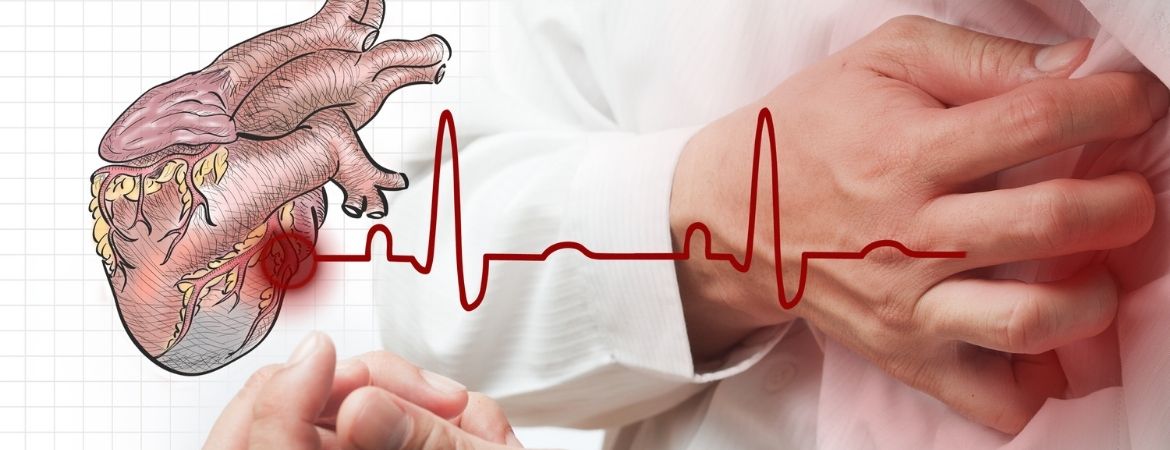
Vascular occlusion refers to a blockage in the blood vessels, and it is a possible side effect of receiving dermal or lip fillers. Early diagnosis and prompt treatment are crucial for the best prognosis, as they help remove the blockage from the blood vessels and enhance blood flow. If you experience symptoms or suspect vascular occlusion after getting fillers, you should arrange a consultation at a cardiology hospital immediately.
Table of Contents
ToggleWhat is Vascular Occlusion?
Vascular occlusion occurs when there is a blockage in the blood vessels, hindering the normal flow of blood through your arteries or veins. Typically, this blockage is caused by a blood clot or the accumulation of fatty plaques. It can also result from narrow arteries or veins, making it challenging for blood to move through these pathways.
Individuals who undergo procedures such as lip fillers or dermal fillers, administered by dermatologists to enhance the skin by injecting a substance beneath it, may have an increased risk of developing facial vascular occlusions. If you are considering or have had such cosmetic procedures, it’s important to be aware of this potential risk and seek professional advice if you see any signs of vascular occlusion.
Signs of Vascular Occlusion

Signs of vascular occlusion include:
1. Painth
Severe pain is one of the severe signs of vascular occlusion that can occur during a cosmetic injectable procedure. The use of numbing cream or injected local anesthetic may mask this symptom, making it less reliable until the effects wear off some hours later.
If severe pain worsens during the treatment or in the hours following the procedure, especially if it’s one-sided (e.g., one cheek or one side of a lip), it could be one of the signs of Vascular Occlusion (VO) rather than just a bruise. In such cases, urgent review and medical attention are necessary.
2. Blanching
When there is compromised blood supply to areas downstream of the injected site, a change in the color of the surrounding skin is common. The color may vary from white to pale or dusky, depending on the circumstances. This discoloration will persist and not respond to massage, heat, or warmth. With progression, it may resemble a lacy doily pattern. If you observe such changes, it is one of the signs of vascular occlusion and requires immediate medical attention.
3. Discolouration
Skin discoloration typically occurs several hours after treatment if not identified earlier. As blood accumulates in the skin, unable to flow and lacking sufficient oxygen, it leads to a dusky, purplish hue, and eventually, a blue-gray appearance. This may initially resemble bruising, but a notable difference is that bruises do not change color under pressure, whereas this discoloration will if your clinician has demonstrated how to detect it.
4. Coolness
When the blood supply to an area of the skin is compromised, the affected skin starts to cool down over time. This change in temperature can be noticed by comparing the warmth in nearby, unaffected skin to the compromised area.
However, it may be challenging to perceive this temperature difference if you are not trained to do so. If you suspect compromised blood supply and observe a significant cooling of the affected area compared to the surrounding skin, especially if you are not trained to assess this, it is significant to seek immediate medical attention.
5. Necrosis
If any signs of vascular occlusion are not visible, the compromised skin starts to undergo cell death due to a lack of nutrients and oxygen downstream from the blocked vessel. This typically becomes evident around 2-3 days after the injury. At this stage, it is not too late for intervention, although some skin may not survive. The repair process may take weeks to months, which can be significantly longer compared to if the issue had been identified and addressed earlier. Swift medical attention is crucial to mitigate the impact and improve the chances of skin recovery.
Causes of Vascular Occlusion
Vascular occlusion, blocking an artery or vein, can result from:
- Compression by dermal fillers.
- Blood clot formation.
- Buildup of fatty plaques.
This blockage disrupts blood and oxygen flow, causing associated symptoms. Seek immediate medical attention if suspected.
How is Vascular Occlusion Diagnosed?
Vascular occlusion, a serious condition often diagnosed in the emergency room, involves a thorough assessment. Your provider will:
- Take a complete medical history.
- Perform a physical exam to understand your symptoms.
During the exam, they may inquire about:
- Onset of symptoms.
- Recent dermal filler procedures.
Imaging tests, such as X-rays, aid in confirming the diagnosis and provide a clearer view of the blockage. Seek prompt medical attention if you experience symptoms of vascular occlusion.
How is Vascular Occlusion Treated?
After an early diagnosis of vascular occlusion from dermal fillers, treatments may include:
- Massaging or tapping to alleviate blood vessel pressure.
- Applying heat for enhanced blood flow.
- Injecting hyaluronidase to break down filler substances.
- Taking aspirin to thin blood and improve circulation.
- Administering antibiotics for infection prevention or treatment.
In cases of skin necrosis, where the blood vessel blockage is removed but damage persists, cosmetic surgery may be necessary for skin repair. Consult your healthcare provider for appropriate guidance.
How Can You Prevent Vascular Occlusion?
Vascular occlusion is rare, and complete prevention is challenging. The most effective preventive measure is to minimize dermal filler procedures if you have signs of vascular occlusion. When opting for fillers:
- Limit procedures to reduce risk.
- Choose a reputable provider specializing in the procedure.
- Ensure FDA-approved filler substances are used.
Taking these precautions can help mitigate the risk associated with dermal fillers and enhance overall safety.



